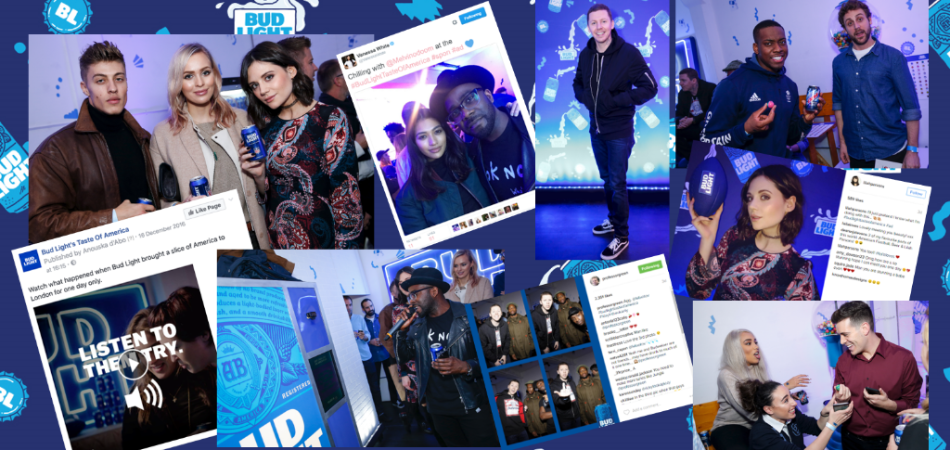
How can brands use music to overcome generational tensions?
Joanna Barnett, Strategy Director at Truant, on the power of music to bring people closer together and broaden a brand’s appeal.
The Changing Face of Influencer Marketing


The influencer marketing space has evolved rapidly and now presents a baffling array of personalities, channels, technologies, regulations and evaluation models. Five years ago, it was all about earned relationships with bloggers typically driven by creative gifting, seasonal product drops and long-term relationship building. Often there was a marked disparity between the level of traffic to their blogs and the size of their social followings: perhaps just a few thousand on Twitter, sometimes less on Facebook, with Instagram nowhere in sight.
Now a quick online search for ‘top influencers’ reveals a social-first, visually-led approach with Instagram and YouTube dominant. Of course, this hasn’t happened overnight - hobbyist creators have long been a feature of YouTube – but the sheer volume and reach of lifestyle, food, music, film, sport, tech, automotive and comedy vloggers is incredible. These are people who regularly command far more eyeballs than primetime TV shows.
This evolution and expansion have a number of implications. The value of influence has soared as the content creators themselves recognise their own worth to brands. Simultaneously tech entrepreneurs have realised the significant commercial potential in developing specialised platforms which listen, map, aggregate and monetise.
At the same time, the regulatory environment has become more sophisticated. Brands and influencers have wised up to the need to declare paid content, disclaim the provision of goods or services and to use hashtags (#AD when the brand is responsible for both payment and message content, #SPON when payment is made but creative control lies with the influencer). What’s less clear are the implications of giving an influencer a product or experience without financial payment or stipulation of message content, assuming the influencer chooses to write positively about what they’ve received.
For Google, ‘gifting’ requires both a disclosure and the use of no-follow links. Doing otherwise is seen as an attempt to game PageRank on the basis of “exchange for goods or services.”
So, brands need to adopt a nuanced approach: play it safe, but be as creative as possible in what they offer influencers. Exclusive access, involvement and insight may, in many cases, not constitute goods or services.
Key take outs:
It’s vital to invest in technology. Influencer mapping tools and buzz monitoring platforms boast complex integrations with all of the key social channels making it easier than ever to rank influencers according to their social impact, track their social share of voice against competitor brands and measure uplift, sentiment and sentiment drivers in earned social conversations. At the same time, self-service and managed service influencer marketing platforms provide a ready route to paid influence, particularly when it comes to aggregating ‘micro-influencers’ with higher engagement rates.
We have seen a number of distinct paid and earned options emerging in the influencer marketing mix. We call these The Ambassador (a paid ‘face of’,) The Firestarter (a platform-driven paid programme) and The Long Burner (a non-monetary value exchange that boosts the standing of an influencer and their content). Each plays a key and complementary role and they should ideally all be used in combination to deliver a successful campaign and the best commercial outcomes.
Influencers and advocates differ from one another, although the two words are often used interchangeably. Influencers already have reach, authority and credibility; advocates may have none of these, especially reach, but are respected by their peers and prepared to champion your brand on social media. Typically they’re consumers or social superfans, discovered via social listening rather than conventional influencer search. Creating a solution which flows exclusive content to advocates and rewards them for sharing on their social estates also builds their follower base and creates peer kudos for them. Using influencers and advocates together creates an effective ‘top down, bottom up’ model.
Measurement is arguably still in its infancy. Figures such as social followers and subscribers are visible to all. It’s more difficult to get hold of an influencer’s blog or website traffic. But to look at this data is to take a reductive view. More valuable are online and social buzz, the sentiment of that buzz and the drivers of that sentiment. These at least address brand health metrics such as awareness, perception and preference. Better still is setting out to encourage consumers to take action and setting up to track and measure these actions in advance.
THE CHANGING FACE OF INFLUENCER MARKETING
Visit 3 Monkeys | Zeno's showcase to read the report
CONTACT
Hugh Burrows, Head of Digital, 3 Monkeys | Zeno, [email protected]
Hugh has 17 years’ experience in digital and social media. This includes Que Pasa Communications (now part of Seven C3), working on marketing campaigns for Red Bull, Nike and Sony Ericsson; and content / UX projects for the BBC, Channel 4, RTL and Virgin Media. More recently, Hugh was at Unity, managing the social elements of major campaigns including Shwopping for Marks & Spencer. At 3 Monkeys Zeno, Hugh oversees strategy and planning across online, social and influencer channels for clients including BP Castrol, Novartis and Microsoft.
Looks like you need to create a Creativebrief account to perform this action.
Create account Sign inLooks like you need to create a Creativebrief account to perform this action.
Create account Sign in